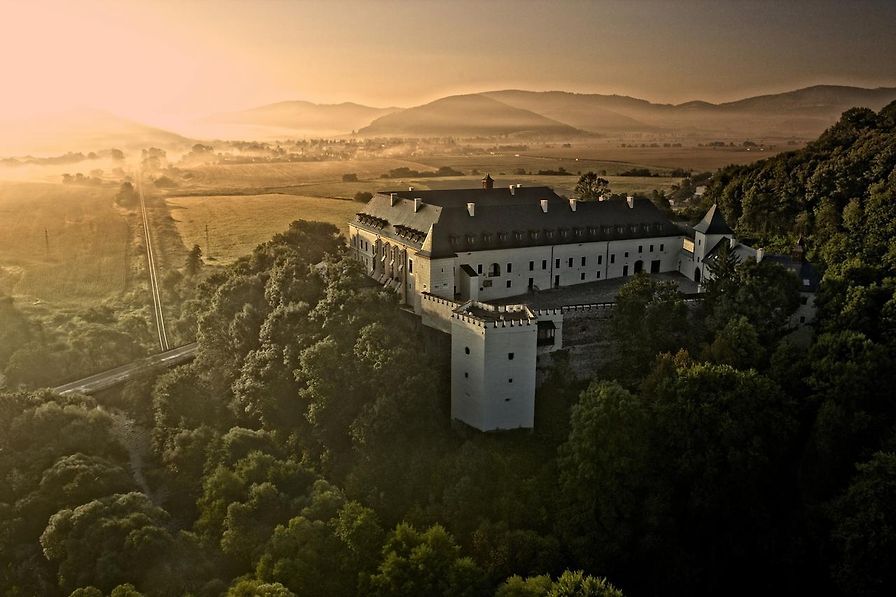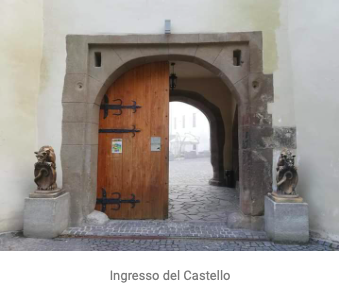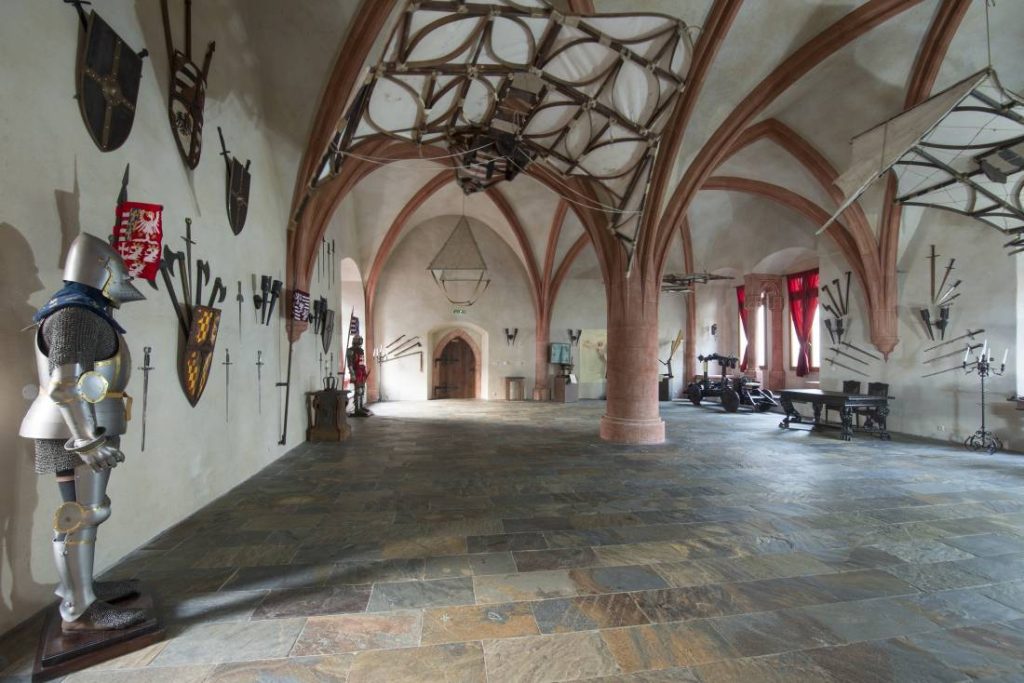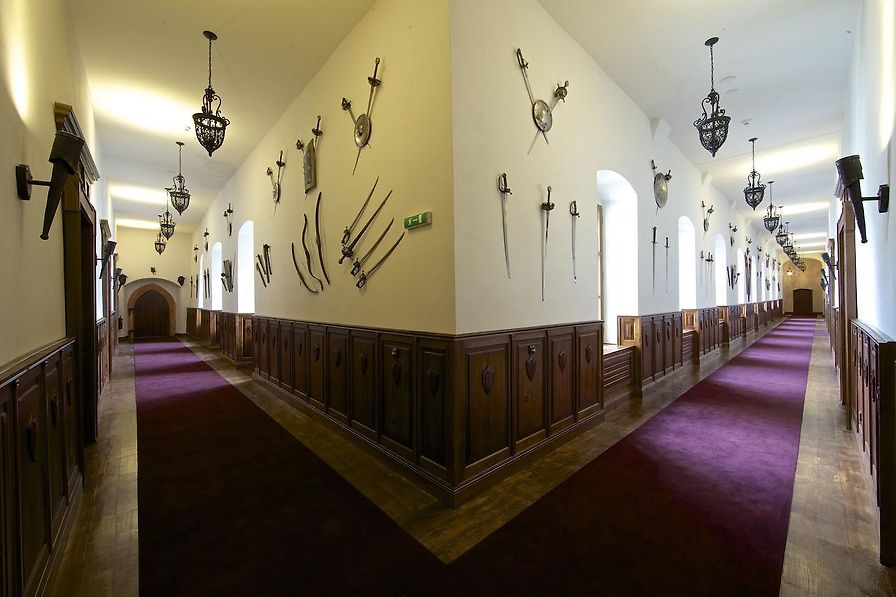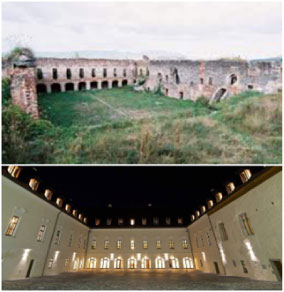In the valley of the river Slatina, about 14 kilometres from Zvolen, lies the village of Viglas and above it stands the majestic Vígľaš Castle, which has the status of a national cultural monument. It is believed that Víglas Castle was built around the year 1299, initially as a monastery by crusaders returning to Europe from Palestine. The village Zvolenský Svätý Kríž, today Vígľaš, was first mentioned in the year 1332. During the reign of Charles I of Hungary, founder of the Order of St George, the castle became the property of the monarchy. Later, when Louis (also known as Ludwig the Great), son of Charles I, became king of Hungary, Vígľaš Castle was the most important centre of royal property east of Zvolen.
The castle’s importance grew even more during the reign of Sigismund I, Emperor of the Holy Roman Empire, who spent relatively large amounts of time there in the years 1390-1410, mainly during the hunting season. The emperor also issued several official documents (the oldest dates back to 9 July 1390) while he was at the castle. Sigismund of Luxembourg and his wife Barbara Celje founded the Order of the Dragon in 1408. They accepted their supporters and other rulers into the Order and formed a coalition with them. Vígľaš Castle was a meeting place dedicated to this Order. Even today the symbol of the Order, an inverter Dragon whit a cross, can be seen in several places in the cast
On 22nd May 1424 (some sources say 1429) Sigismund donated the castle together with the vast lands and villages of Zolná, Sebedín, Veľká Slatina, Malá Slatina, Očová, Čerín, Čačín and Lehota to his wife Barbara of Celje. Queen Barbara is one of the ancestors of modern European royal families; her blood runs in the veins of most of today’s dynasties, including that of Queen Elizabeth II of Great Britain. Barbara gave birth to Elisabeth (later known as Elisabeth II of Bohemia), descendant and sole heir of Sigismund, whose true date of birth can be calculated by virtue of a letter from King Sigismund to John, son of Peter Kemendi, lieutenant of the county of Zala, dated Viglas 26 April 1410 and sealed with Queen Barbara’s seal, in which the king informed him of the birth of his daughter, who later inherited the castle after the death of her mother. In the 15th century, the estate had several landowners, only to return to royal ownership towards the end of the century.
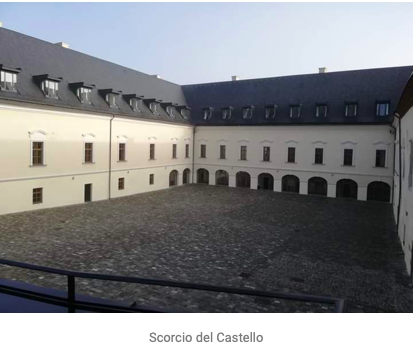
The location of the fief gave the castle a specific role. In peace it was a popular place for relaxation and hunting and the locals instead of work obligations provided services for visitors to the castle. The castle remained a favourite place to rest even during the entire reign of King Matthias Corvinus. During wartime, the castle had a very important defensive position and was often attacked. In the second half of the 16th century, the castle played an important role in anti-Turkish battles. At that time, a new fortification was added to the castle, comprising four corner towers and manned by a permanent military crew. In 1605, the castle was briefly occupied by Stefan Bockay’s rebels.
It later became the private property of feudal families, first the Csáky family, then from 1690 the Esterházy family until the end of feudalism. The Esterházy family changed the character of the estate into a manor house and thus very little was preserved of its original architecture – only the Gothic chapel and part of the fortification. The castle was last restored in the second half of the 19th century. During the Second World War, it was damaged and burnt down to a large extent. In 2009, the castle ruins were purchased by Baron Daniel von Rechitar, the current Grand Master of the reconstituted Order.
In September 2014, the castle was completely renovated by the owners, maintaining the old Gothic style. Current residence of the Grand Master and seat of the Grand Magistry’s offices.
For information: Address: Vígľaš 602, 962 02 Vígľaš, Slovakia Telephone: +421 904 994 499
Website: https://grandviglas.com/


